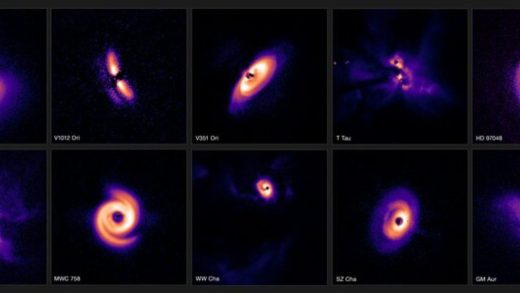China’s Tianwen-1 Spacecraft Takes Photos of WHOLE Mars Planet
After orbiting Mars more than 1,300 times since early last year, an unattended Chinese China’s Tianwen-1 spacecraft has captured imagery data embracing the whole planet, including photos of its south pole, according to official media on Wednesday.
China’s Tianwen-1 completed successfully its first journey to the Red Planet in February 2021. Since then, a robotic rover has been deployed on the planet’s surface while an orbiter surveyed it from space.
A brief history of Mars observation
Astronomers have been attempting for remote observation of Mars via spacecraft. Beginning in the late 20th century, spacecraft launched from Earth have greatly improved our understanding of the Martian system, with a special focus on its geology and possibilities for habitability.
Engineering interplanetary traveling is difficult, and attempts to study Mars have failed repeatedly, mainly in the beginning. About 60% of all Mars-bound spaceships failed before completing their missions, and some failed even before they could commence their inspections.
Some missions have seen unprecedented success, like the Mars Exploration Rovers Spirit and Opportunity, which managed to function well into their projected lifespan.
Present situation
The Curiosity and Perseverance rovers, both maintained by NASA, as well as the Zhurong rover, an unit of the Tianwen-1 mission of the China National Space Administration, are the three operating rovers on the surface of Mars as of May 2021.
Mars Odyssey, Mars Express, Mars Reconnaissance Orbiter, Mars Orbiter Mission (Mangalyaan), MAVEN, the Trace Gas Orbiter, the Hope Mars Mission, and the Tianwen-1 orbiter are eight of the orbiters currently studying the planet.
These orbiters have acquired a tonne of data on Mars. InSight is a stationary lander that is exploring Mars’s inner depths. InSight is a stationary lander that is studying Mars’s inner depths.
To collect the materials the Perseverance rover gathered, NASA is planning a number of sample return missions. 2011 saw the failure of an attempt to return to Phobos (Fobos-Grunt), a moon of Mars. There are now 13 probes studying Mars, including the Ingenuity chopper that is exploring potential study areas for Perseverance.
Chinese spacecraft Tianwen-1 has taken pictures of the WHOLE Mars planet
China obtained the first images of the Martian south pole, where almost all of the planet’s water resources are confined, from orbit.
2018 had seen the finding of water beneath the ice at the planet’s south pole by an orbiting probe run by the European Space Agency.
A permanent resource for any human research of the planet as well as a vital step in setting up the planet’s potential for life is the detection of underlying water.
Other Tianwen-1 pictures also include shots of the Arabia Terra highlands in the north of Mars and the 4,000-kilometer (2,485-mile) long canyon Valles Marineris.
Tianwen-1 also delivered top-down photos of the 18,000-meter (59,055-foot) Ascraeus Mons, a huge shield volcano that NASA’s Mariner 9 mission originally found more than 50 years ago, and high-resolution photos of the edge of the gigantic Maunder crater.
This achievement of the Chinese spacecraft will help in further exploring the red planet in the following ways:
- A comprehensive study of surface features.
- Collecting surface information from multiple points of view.
- Understanding the planet’s dynamic activities and space environment.
- Identifying the global features of volcanoes, impact craters, and basins.
- Studying the Martian climate and weather.
- Investigating surface composition and mineralogy.
- Refining topographic maps.
- Studying the distribution of minerals and detecting metal resources.
Tianwen-1 mission was launched on a Long March 5 heavy-lift launch vehicle on July 23, 2020 from the Wenchang Spacecraft Launch Site. The spacecraft reached Martian orbit on February 10, 2021, following a seven-month trip through the inner Solar System.


